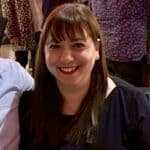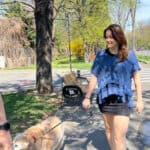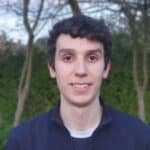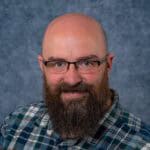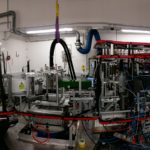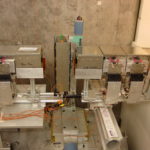Profile
Adam Washington
-
About Me:
I help other scientists use neutron scattering to better understand their research. I also enjoy playing video games and watching the worst possible movies with my spouse.
-
My pronouns are:
he/him
-
My Work:
I write software that helps scientist compare their theories against the results of neutron and x-ray scattering experiments.
-
Read more
ISIS attracts scientists from all over the world to perform neutron scattering experiments. These experiments reveal information about the microscopic and atomic scale structure of their samples in ways often inaccessible by any other technique.
The scientists that I work with are world leaders in their areas of expertise. However, neutron scattering is a field and expertise in its own right. My goal is to write software that will help these scientists to analyze the results of their experiments without having to become experts in neutron scattering.
The particular program that I’m working on right now is called Dissolve, which is short for Disordered Solver. It’s called that because it’s used for studying disordered materials, which is anything where there isn’t a regular arrangement to the molecules. Any liquid or gel, where the atoms can freely move around, is an example of a disordered material.
A scientist tells our software what molecules were in their sample and what kinds of forces are acting between those molecules. The software then simulates a small sample of those molecules and calculates what kind of neutron scattering would be expected. The software then compares the calculated scattering with the what the scientist measured. The software then starts adjusts the forces to make the calculated scattering closer to the measured experiment.
Eventually, the calculated scattering will be very close to the scattering that the scientist measured and the software looks at the arrangement of molecules that produces this scattering pattern. The fact that the pattern matches the experiment doesn’t mean that the atoms in the actual experiment. First off, the actual experiment will have trillions of times more atoms than our software could ever handle. Furthermore, there’s a near infinite number of ways to arrange the atoms that will produce the same scattering pattern. However, the configuration of the molecules at the end of the simulation will be closer to the arrangement in the actual sample than what the scientist had when they started. This is still useful for allowing the scientist to look at how the molecules are interacting, the shapes that they form, and what forces develop between them.
To help improve the final arrangement that the software produces, the scientists often perform multiple measurements on the same sample. For example, then might do one sample scattering neutrons and another scattering x-rays. Or they might make a new sample the replaces all of the hydrogen with deuterium (which is like hydrogen with an extra neutron attached to the nucleus). Using deuterium in place of hydrogen changes almost none of the chemistry, but massively changes the neutron scattering pattern. As I said earlier, there’s an infinite number of molecule arrangements that will match any one pattern. However, most of those will not match for two different experiments. Thus, the more measurements that they can perform, the closer the final configuration of molecules will be to the one that actually occurred in the experiment.
-
My Typical Day:
I start with a morning meeting where we discuss what we worked on the day before and plan what we’ll each be doing for the day. I then usually spend my mornings researching new ways to make the simulations faster, more convenient, or more stable, followed by an afternoon of fixing known bugs in the program.
-
What I'd do with the prize money:
I would like to donate the money to the Lightyear Foundation, a foundation that is really important to me in a few ways. One, my spouse is someone who grew up with learning disabilities and was often treated as though they could not enter the STEM field, but ended up becoming a teacher, which inspires me every day. Two, because of my own struggles with autism, I know that tactile education for people with disabilities can be one of the biggest gateways to getting kids who may feel left out interested in STEM. The Lightyear Foundation is dedicated to not leaving kids like myself or my spouse behind and so am I.
-
Education:
Bachelor’s degree in Physics from Purdue University
Master’s degree in Physics from Indiana University
Ph.D. in Physics from Indiana University -
Qualifications:
I went to school in the USA, so we didn’t have GCSE’s
-
Work History:
My first few jobs were the usual hodge-podge of odd jobs during school. Scooping frozen custard, doing tech support, and inventorying books. After graduating from university, I did a couple of brief stints as a software developer before going to graduate school, where I intermittently worked as teaching assistant while building a neutron instrument.
After that I went to the University of Sheffield, where I spent a couple of years studying bird feathers and beetle scales before taking up an instrument scientist position at the ISIS Pulsed Neutron and Muon source maintaining a much more advanced version of the neutron instrument I build back in Indiana.
Unfortunately, my partner’s health issues have made it impractical for me to be in the lab until three in the morning, so I transferred out of the instrument scientist position to my current one.
-
Current Job:
Depending on the paperwork, my job title is either Computational Scientist or Research Software Engineer. The essential part of my job is to write software that helps other scientists understand their data. This becomes a cross-roads of the physics of neutron scattering, the chemsitry of what the neutrons are scattering off of, and the computer science of ensuring that all of these calculations are performed correctly. Sometimes this can even expand into biology, medicine, geology, or archaeology, depending on what the visiting scientist is trying to measure.
Not that long ago, the scientists who ran the individual neutron beams were expected to produce their own software to analyse their data. However, that mean that there was a lot of duplicate work between the scientists and users sometimes had to chose between a great beamline with bad software or a bad beamline with great software. Now the instrument scientists can focus on their beamlines and leave the software parts to my colleagues and me.
-
My Interview
-
What did you want to be after you left school?
I wanted to be a scientist, because I loved learning science and wanted to keep at that, but I honestly didn't really know what that would mean.
Were you ever in trouble at school?
I was usually the one fixing trouble around school. By the time I graduated, I'd managed to acquire a master key for the building and the master password to the security system. There was not point in causing trouble, since anything I broke would just be my job to fix again.
Who is your favourite singer or band?
I tend to listen to power metal bands like Sonata Arctica and Nightwish. Unfortunately, that kind of Heavy Mithril gives my spouse a headache, so they've been trying to get me to listen to other artists. I've been particularly enjoying Common as of late.
What's your favourite food?
A proper Chicago style pizza is one of the finest foods in the world.
-



